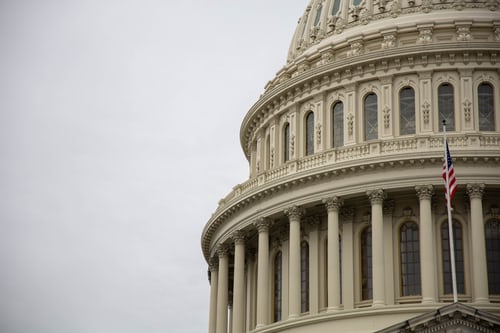Can America win the war on crime?
PRAY FIRST for the protection and safety of our neighborhoods, for the strength and courage to support and uplift those who are struggling, and to be God’s hands and feet, bringing hope, opportunities, and positive change to those in need.
But let justice roll down like waters, and righteousness like an ever-flowing stream. -Amos 5:24
Crime prevention is a multifaceted endeavor and often requires strategies that encompass social, economic, and community-based interventions designed to address the root causes of crime and provide alternatives for individuals facing challenges. Currently, crime rates have shown a concerning upward trend—prompting a renewed focus on effective prevention measures. So, how does socioeconomics play a role in crime, and what role do the church and other community organizations play in crime prevention?
Rising Crime Rates
As of 2024, the U.S. has witnessed an increase in crime rates across various categories. According to recent FBI data, violent crimes, including homicide, aggravated assault, and robbery, have risen by approximately five percent compared to the previous year. Property crimes such as burglary and motor vehicle theft have also seen a similar rise. These statistics highlight the need for comprehensive crime prevention strategies.
Several socioeconomic factors play a significant role in the escalation of crime rates. Areas with high poverty levels often experience higher crime rates associated with limited economic opportunities and resources. Individuals in poor communities may use criminal activities to survive. Poverty has been linked as a direct connection to increases in crime. Unemployment and lack of job availability further exacerbate situations and increase feelings of hopelessness and frustration. This greatly increases the likelihood for people to engage in criminal behavior as an avenue for survival and “making ends meet.” As if these were not enough, limited access to health care, mental health services, and substance abuse treatment can compound conditions that lead to criminal activity, as people lack the necessary care to address the health issues that they are facing.
Prevention Measures
While it may seem obvious to reduce crime rates through aggressive police actions and increased legal reform, many studies suggest that the best way to reduce crime is to address it before it becomes either a part of life or a necessity. This usually comes in the form of meeting the needs of communities at a grassroots level as well as providing resources for at-risk youth.
Youth programs have proven to be an effective strategy in steering at-risk youth away from criminal activities. After-school programs, mentorship initiatives, and job training are essential elements of these efforts. Studies indicate youth who participate in after-school activities are 50 percent less likely to turn to a life of crime. Mentorship programs provide positive role models and guidance, reducing the likelihood of youth involvement in crime by 40 percent. This addresses the future rise in crime before it has a chance to become deeply rooted in the lives of adolescents.
Additional educational opportunities and job training programs have also seen great success as they equip young people with knowledge, skills, and employment opportunities, significantly lowering their chances of turning to crime. Further, involvement in community programs can foster a sense of belonging and responsibility. With such an investment, the allure of crime as a lifestyle diminishes as better, healthier, and more sustainable alternatives are within reach.
Policing a Balance
Many experts agree that a significant portion of crimes are crimes of opportunity. This perspective is supported by the theory of situational crime prevention, which suggests that reducing opportunities for crime can effectively lower crime rates. Research has shown that when potential offenders perceive an opportunity to commit a crime with minimal risk, they are more likely to act on it. Deterrents to this can be as simple as locking doors, cameras, and improved lighting. To strengthen that, community vigilance and local law enforcement presence have also been show to help. However, it’s important to note that while opportunity plays a crucial role, it is not the sole factor. Other elements, such as social, economic, and psychological factors, also contribute to criminal behavior.
In recent years, there have been several instances of police interactions that have garnered nationwide attention, leading to protesting, rioting, and leaving communities in upheaval. Many called to “defund the police” as a solution and city leaders in Los Angeles, New York City, Portland, and San Francisco, among others, cut policing budgets dramatically in 2020. Since then, all have had to increase funding, sometimes more than had been originally cut, to meet rising crime rates.
So where is the balance? Many cities are now exploring ways to establish community policing, which emphasizes building relationships between police officers and community leaders, as well as meeting with residents to understand community concerns and establish trust and rapport. There is also a call for increased transparency from police departments about their policies and procedures, as well as accountability when mistakes are made.
Moving Forward
There is no one-stop solution that will instantly solve every problem. Most attempts will take time as well as trust and commitment from local leadership and the community. Various policies and initiatives have been implemented to increase economic opportunities and social services, serving as powerful tools for crime prevention. Economic development programs play a significant role in reducing crime by reviving economically depressed areas. These initiatives focus on providing jobs and improving living conditions, creating more stable and prosperous communities. Similarly, expanding social services is necessary to address the underlying issues that contribute to crime. By increasing funding for mental health services, substance abuse treatment, and affordable housing, support can be offered to those in need—helping to prevent criminal behavior and promote overall well-being.
What is the Church’s Role?
Churches are vital to community-based crime prevention because they offer support and guidance to those in need. Many churches engage in community outreach programs that offer support and resources to individuals facing challenges, helping to prevent crime. Many churches provide after-school activities, mentorship, and job training, while others can offer counseling and assistance to individuals struggling with addiction and mental health issues—providing crucial support services to those in need.
Churches can also be pillars of the community and be safe havens for those seeking direction. They can be a bridge between city leaders, law enforcement, and community residents. And church leaders can often raise concerns for those who feel like they have no voice.
As Christians, we have a responsibility to care for our communities and support those in need. We must engage in and support local community programs focused on crime prevention at the ground level. In turn we can vote for and advocate for policies that improve economic conditions and expand social services. Yet, our greatest asset and responsibility is to be beacons of hope. Just as Christ grants us eternal hope, so too can we be a body that offers support and resources to individuals in high-crime areas, equipping them with opportunities and hope for a better future and a life dedicated to the higher calling and saving faith.
By working together and supporting truly effective strategies, we can help create safer communities and provide hope and opportunities for others. As we go through our day, let’s continue to pray not only for the wisdom and guidance of our leaders but also for the safety and protection of our communities. Pray for God’s strength to continue our efforts in crime prevention.
HOW THEN SHOULD WE PRAY:
— Pray for healing and restoration in our communities. That God would guide us to be agents of reconciliation and hope, and for God to bring peace and comfort where there is pain, fear, and brokenness. He heals the brokenhearted and binds up their wounds. – Psalm 147:3
— Pray for God to grant wisdom and discernment for the agencies that work on the ground with youth in improvised. Let no one despise you for your youth, but set the believers an example in speech, in conduct, in love, in faith, in purity. – 1 Timothy 4:12
CONSIDER THESE ITEMS FOR PRAYER:
- Pray for unity and strength within our communities and to build strong, supportive networks that deter crime and cultivate mutual respect and understanding.
- Pray for policymakers to have integrity and compassion as they implement fair and just measures, as well as opportunities for those in need.
- Pray for fellow churches and faith communities to be beacons of hope and sources of support for those who need it the most.
Sources: Federal Bureau of Investigation, National Institute of Justice, U.S. Department of Health and Human Services, Bureau of Justice Statistics, Pew Research Center, Department of Justice









